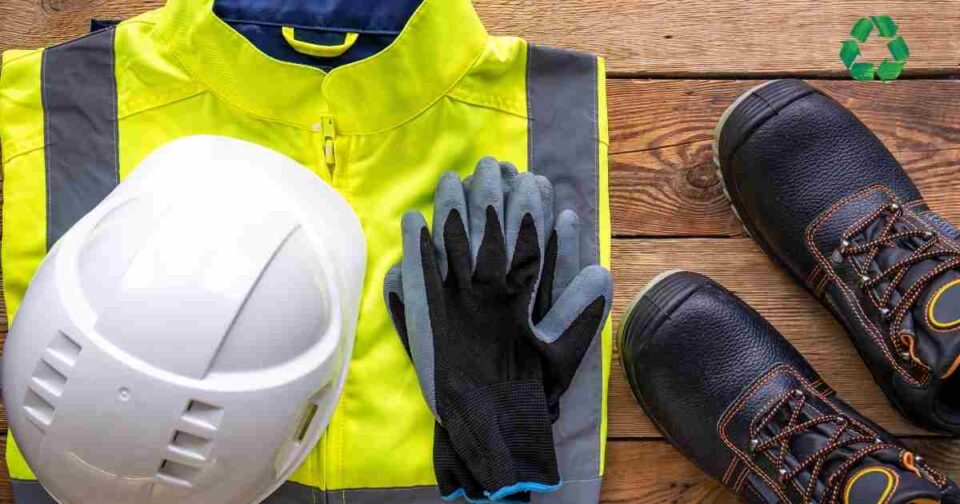Last Updated on July 21, 2025 by Admin
In a world that’s becoming increasingly eco-conscious, industries across the globe are making strides towards sustainability. The construction sector, known for its rugged demands and high-risk environments, is no exception. As workers demand more from their gear, construction workwear manufacturers are stepping up to meet those needs with eco-friendly, durable, and tech-savvy solutions. From biodegradable safety boots to recyclable high-vis jackets, sustainable workwear is not just a passing trend but a movement reshaping the future of the construction industry.
Table of Contents
The Shift Toward Sustainability in Construction Workwear
Workwear isn’t just about comfort and safety anymore; it’s also about the environment. For years, work clothing has been associated with heavy-duty, synthetic materials, often leaving a significant environmental footprint. However, with a growing global emphasis on reducing carbon footprints, many construction companies are looking for alternatives that don’t compromise on quality or durability.
Now, forward-thinking brands are leading the charge by incorporating recycled fabrics, biodegradable materials, and low-impact production processes into their collections. Sustainable materials, such as organic cotton, hemp, and even recycled plastic bottles, are being used to create rugged yet eco-friendly workwear that stands the test of time.
Key Sustainable Trends in Construction Workwear
1. Recycled Fabrics and Materials
One of the standout innovations in eco-friendly workwear is the use of recycled fabrics. For example, work jackets and pants made from recycled polyester or nylon are becoming increasingly popular. Not only do they reduce the waste in landfills, but they also offer the same level of durability and functionality as traditional fabrics.
2. Biodegradable Safety Boots
Traditional work boots, often made from synthetic leather and rubber, can take hundreds of years to decompose. Enter biodegradable safety boots made from sustainable materials like natural rubber and leather alternatives. These boots break down over time, leaving a smaller environmental footprint after their lifecycle is complete.
3. Recyclable High-Vis Wear
High-visibility clothing, which is a key safety feature on construction sites, is often made of synthetic, non-recyclable materials. However, new advancements have led to the creation of high-vis jackets and vests made from recyclable and eco-friendly materials, which are just as bright and effective but with a significantly lower environmental impact.
4. Energy-Efficient Manufacturing
More and more workwear companies are adopting energy-efficient production processes, reducing energy consumption, and minimizing the environmental impact of their manufacturing operations. Some brands are even using renewable energy sources, such as solar and wind power, to create their products.
The Benefits of Sustainable Workwear
- Durability and Long Life: Many eco-friendly materials are designed to be tough and long-lasting, reducing the need for frequent replacements.
- Comfort: Sustainable fabrics like organic cotton and hemp are breathable and comfortable for all-day wear, a significant improvement over traditional materials.
- Brand Loyalty: As more workers and businesses choose eco-friendly options, wearing sustainable workwear can enhance a company’s reputation and brand loyalty.
- Cost-Effective: While sustainable workwear may have a higher upfront cost, the long-term savings from durability, reduced waste, and fewer replacements can be significant.
Future Innovations in Sustainable Workwear
Looking ahead, the construction industry is on the cusp of more groundbreaking developments in sustainable workwear. Brands are exploring smart fabrics that offer more than just protection, such as fabrics that regulate body temperature or feature integrated sensors that monitor a worker’s health and safety. There’s also a growing interest in wearable tech that could revolutionize construction uniforms, integrating devices for tracking vitals, location, or exposure to hazardous materials.
Conclusion: A Greener Future for Construction Workers
The shift toward sustainable construction workwear is more than just a trend; it’s a necessary evolution. As construction companies and workers become more eco-conscious, the demand for environmentally friendly, durable, and safe workwear continues to grow. Whether it’s recyclable high-vis vests, biodegradable safety boots, or energy-efficient manufacturing, the future of workwear looks not only safer but greener as well.
For Yurinox Workwear, staying ahead of this trend means offering your customers the latest in sustainable, high-quality work gear that doesn’t just protect workers but also the planet. With the right balance of durability, safety, and sustainability, you can ensure your customers get the best of both worlds.
Related Posts:
- What Are the Latest Materials Now Used in Construction Site Workwear?
- Work Smarter, Not Harder: The Top-Rated Non-Slip Work Boots for Every Job
- Tips for Choosing Sofa Upholstery Fabric
- How Does Green Construction Add Value to Homes?


